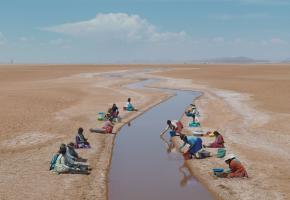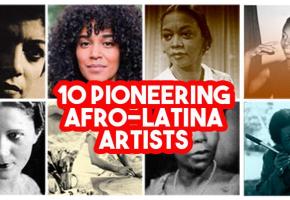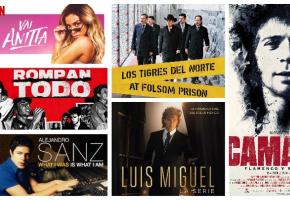1. The most Boring Film title of all Time?
The first movie ever shot in Spain had a title worthy of putting off any Spaniard from making a film ever agian, let alone going to see one. It was Eduardo Jimeno's People Coming out of Noon Mass at the Cathedral of the Virgin of Pilar in Zaragoza (1897). As if to torture as more, this was followed by a series of shorts by the Lumière brothers' cameraman Alexandre Promio. The first actual fiction film made in Spain was written, directed, produced and performed by Spanish film pioneer Fructuoso Gelabert entitled Riña en un café (1897), and premiered at an exhibition in Barcelona, the centre of Spanish moviemaking until 1915. These early movies faithfully reflected local Spanish cultural tastes. Documentaries about bullfighting were popular, as were adaptations of 19th century romantic plays.
2. The ‘Golden Age’
By the 1920s, the Spanish Film industry was producing more than 60 pictures a year. This era encompasses the transition from silent to talking pictures. It was during this time that Luis Buñuel and Salvador Dali’s surrealist short Un Chien Andalou(1928) was screened in Paris, launching Bunuel’s controversial and eclectic career. Meanwhile, the ‘españolada’ genre dominated the screens: it presented an array of fiery flamenco dancing women and jealous, evil-doing farmers in a typical Southern Spanish setting, which idealised the country’s industry and traditional culture.
3. The Civil War
The great gains made by the Spanish industry by the 1930s ground to a halt by the start and devastation of the Civil War. Franco’s right-wing government brought increased censorship, and Spanish cinema during this time became an ideological tool to steer the population in favour of the new regime. Dubbing quickly became a way of deleting dialogue that appeared to challenge the values or ideology of the regime. By the 1950s, Franco himself began to script films about traditional Spanish folklore, gypsies, crusades as well as melodramatic romances.
4. Censorship
In the 1950s, Spain longed for modernisation and liberalisation, as many people considered the country culturally backward. Over the next decade, major filmmakers such as Juan Antonio Bardem (uncle of contemporary Spanish actor Javier Bardem) and Luis Garcia Berlanga used their talent to bypass the censors. Examples include Berlanga’s El Verdugo (‘The Executioner’, 1963), which, despite having to cut fifteen minutes off the final version, the central messages, against the penalty message, the Franco government, and against Franco himself who was internationally known as ‘the Executioner’, managed to get through.
In Bardem’s highly metaphorical Muerte de un ciclista (‘Death of a Cyclist, 1955), the upper class femme fatale protagonist, a veiled representation of Franco and his regime, runs over a working class cyclist, exposing an implicit ideological critique of the destructive haute-bourgeoisie.
Later, Carlos Saura, became the genius in passing the censor's rather unsophisticated antenae. As his colleague and muse Geraldine Chaplin said “At that time, to make a movie you had to be a contortionist intellectually to get by the censors, if you were doing anything remotely political. And we did it, and we had fun doing it” she says. Chaplin's mystically melancholy presence in Saura's work, added a beauty that could arguably have bedazzled censors into submission.
5. Sensibility or Scandal?
Bunuel’s Viridiana (1960) was the ultimate controversial film during the Franco era. It was banned in Spain and the minister reprimanded for passing the script (just how it went under the nose of Franco’s tight censorship is unknown). However, it won the Palme d’Or in Cannes despite the Vatican’s protests, saying it was not just an insult to Catholicism but Christianity itself. By this time Bunuel had long lost his faith, and used his film to criticise the church for its authoritative rule in the country and for its support for Franco. The plot follows the eponymous Viridiana, who leaves a nunnery to visit her uncle, who is hopelessly obsessed with her as she reminds him of his deceased wife. He then drugs her and attempts to rape her while re-enacting his wedding night. Scene after scene, the film plunges us further into a world full of sin, ugliness, misery and guilt. One of the final scenes recreates and parodies Leonardo Da Vinci’s Last Supper, composed of drunken, diseased and disabled beggars. This is Buñuel’s representation of Spanish society under the Franco regime.
6. La Movida
“If you lived in the 80’s and remember it, then you didn’t live them”. This is how those involved in the ‘la movida Madrileña’ described the hedonistic culture born in Madrid. It comprised of an explosion of post dictatorship, pent-up cultural energy that expressed itself in multiple media: music, fashion, painting and photography, as well as film. It was an era of expression that saw the rise of pop and underground music, comics, glam rockers, alcohol abuse, drugs, and sexual experimentation - very similar to the Punk era in 1960s Britain. Almódovar comically reflected the messiness and confusion of the era, especially in Pepi, Luci, Bom y otras chicas del montón (1980). Controversial moments include the ‘Golden Shower’ scene, where Bom stands on a chair and urinates on Luci’s face, which reflects renewed freedom for hedonism and playfulness. Lesser known yet significant filmmaker Eloy de la Iglesia focused on previously forbidden themes such as Basque nationalism and homosexuality. His film El Diputado(‘Confessions of a Congressman, 1978), was named a ‘trashy masterpiece’ and follows Roberto, a happily married politician, who, confused by this new liberal society, becomes enthralled with the ever present rent boys in de la Iglesia’s vision of a sex-soaked Madrid. The most sticking moment involves a threesome between the protagonist, his loving wife, and an angelic-looking rent boy.
7. Pedro Almódovar
One does not think Spanish Cinema without thinking Pedro Almódovar. Following the collapse of the Franco dictatorship, Almódovar was one of the budding young Spanish filmmakers to take full advantage of this newfound buzz of liberation, embracing this movement with a string of outrageous story lines highlighting taboo subjects and activities. His films were shocking, flamboyant, irreverent, anarchic as well as warm and funny and sometimes plain daft. Openly referring himself as a ‘woman’s director’, Almódovar fully believes in celebrating the beauty and fascination of women on screen. They often play against macho and phallocentric men. Top picks include: Todo sobre mi madre (1999), the film for which Almódovar gained the most recognition and awards, including an Oscar for Best Foreign Film. It portrays a woman who lost her son in a car crash and flees to Barcelona to tell the boy’s now transsexual father; Hable con ella (2002) tells the story of a male nurse who after falling in love with a comatose patient, rapes her and she falls pregnant; Volver (2006), this part family drama, part ghost story presents the themes of family, incest, death and female resilience. With all Almódovar films, watch out for the colour red; the director often uses it as a metaphorical vehicle as it symbolises female passion.
8. The Mentor and his Muse: a Spanish tradition?
"The movie star and the intellectual," says Carlos Saura, with a wink through his granny glasses. “Who could ask for more?” “Yeah” shoots back Geraldine Chaplin, “but who’s which?” It has been said that Geraldine and Carlos were ‘the coolest couple’ in Spanish cinema in the height of their respective careers. Saura had become one of Spain’s most important artists, managing to make political films right under Franco’s nose. Chaplin had fallen in love with the country after filmingCrime on a Summer Morning , ironically finding personal freedom in a place that, as she soon discovered, was in thrall to a dictator. After being introduced to Saura, Chaplin would form the essential ingredient to the director’s cinema: adding a spell-binding melancholic beauty to the political subtext. Although their relationship disintegrated after twelve years, Saura would not have been able to reach such creative highs without Geraldine as his artistic inspiration.
Beautiful, brunette, slender and glamorous; stubbly, greying, and chubby is how one would describe the pairing of Spanish actress Penelope Cruz and her friend-mentor, Pedro Almódovar. However this is one of the greatest partnerships in Spanish cinema. It has been said that apart from her father, Almódovar has been the greatest male figure in Penelope’s life. “He changed the way I looked at the world before I even knew him” she says in an interview. She decided she wanted to become an actress came after watching Almódovar’s Atame!(1990), and later said “even when I was a little girl, I identified with him”. Almódovar has been able to bring out her sensuous side on screen, while Penelope has brought Pedro a bigger box office. "We operate like lovers. So while we don't have the pleasures of sex, we don't have the complications of sex either. We work really well as a couple who don't sleep together."
9. Spanish-International Cinema
Another aspect of Spanish cinema mostly unknown to the general public is the appearance of English-language Spanish films such as Agora (dir. Alejandro Amenabar, st. Rachel Weisz), Che (dir. Steven Soderbergh, st. Benicio del Toro),The Machinist (dir. Brad Anderson, st. Christian Bale), The Others (dir. Alejandro Amenabar, st. Nicole Kidman). All of these films were produced by Spanish firms and were great international hits. More recently, German director Dominik Moll’s Le moine (‘The Monk’, 2010) is a French-speaking Spanish production based on a 16th century gothic novel, starring Vincent Cassel and Geraldine Chaplin. There are also four major American remakes of Spanish films: Vanilla Sky (2001) is practically a shot-for-shot remake of Abre los ojos (dir. Alejandro Amenabar, 1997; if you have seen the former don’t be put off by the Spanish original, it is far superior to its American counterpart); Criminal (2004) was originally Nueve Reinas (2000); American horror flick Quarantine was a remake of the Spanish REC (1997), and Silent House (2010) was remade into an American version of the same name in 2011.
10. Lawrence of... Andalucía?
Did you know that Europe’s only desert is in Andalucía? The outdoor scenes of many spaghetti westerns (or Tortilla Westerns as they should be called), especially those with a relatively higher budget, were shot in Spain, in particular the the Tabernas desert of Almeria (Andalucía) and Colmenar Viejo and Hoyo de Manzanares (near Madrid). The “bad lands” of Spain proved to be an ideal substitute for America’s Wild West in such movies as A Fistful of Dollars (1964) and its sequel A Few Dollars More (1965) directed by Sergio Leone. David Lean also filmed parts of Lawrence of Arabia with Peter O’Toole there and many years later, Steven Spielberg returned with Harrison Ford to film scenes of the Indiana Jones series. I dare anyone to walk through this last remaining spaghetti western film set and not whistle the theme tune to The Good, The Bad And The Ugly (1966).

















